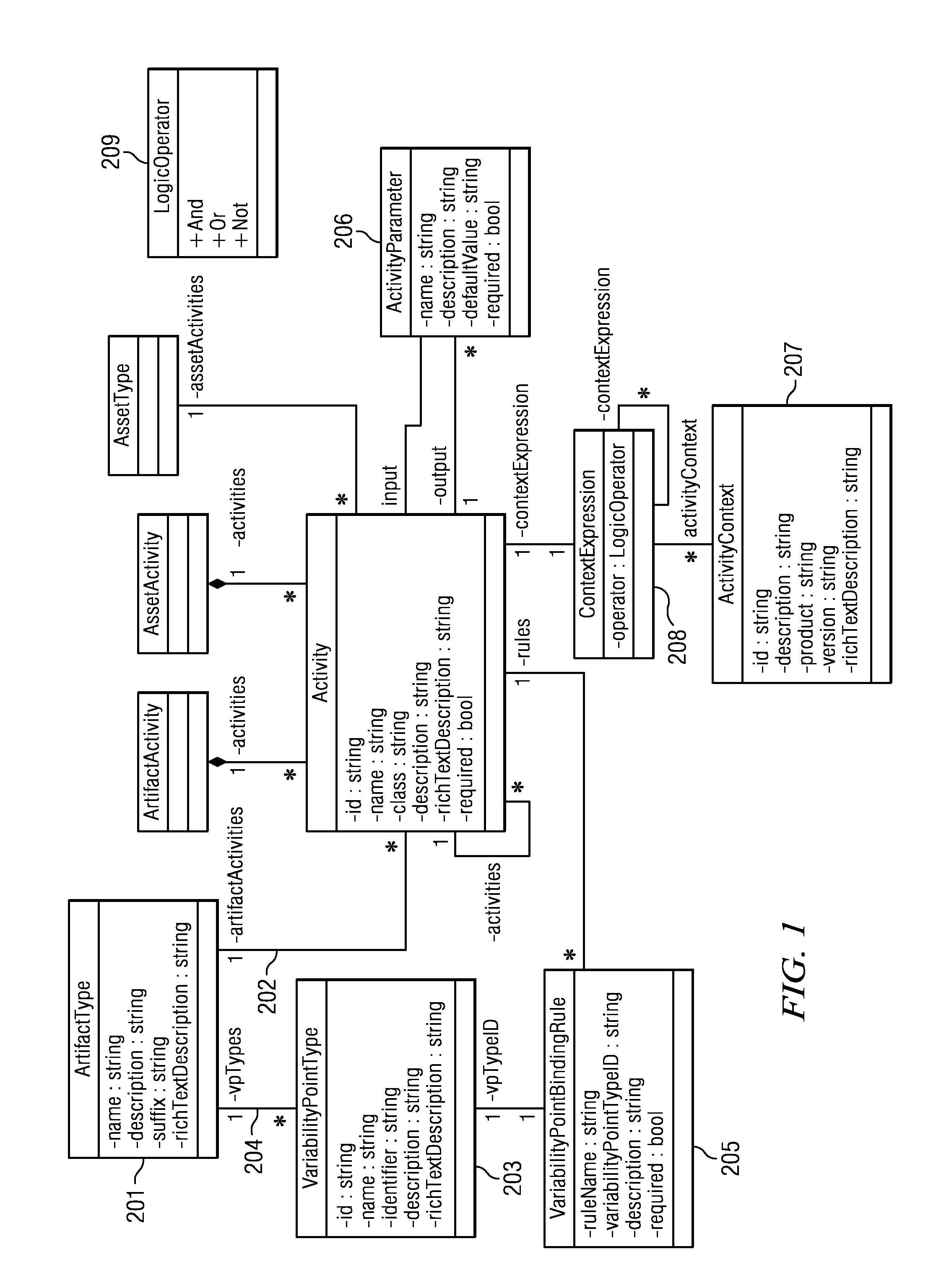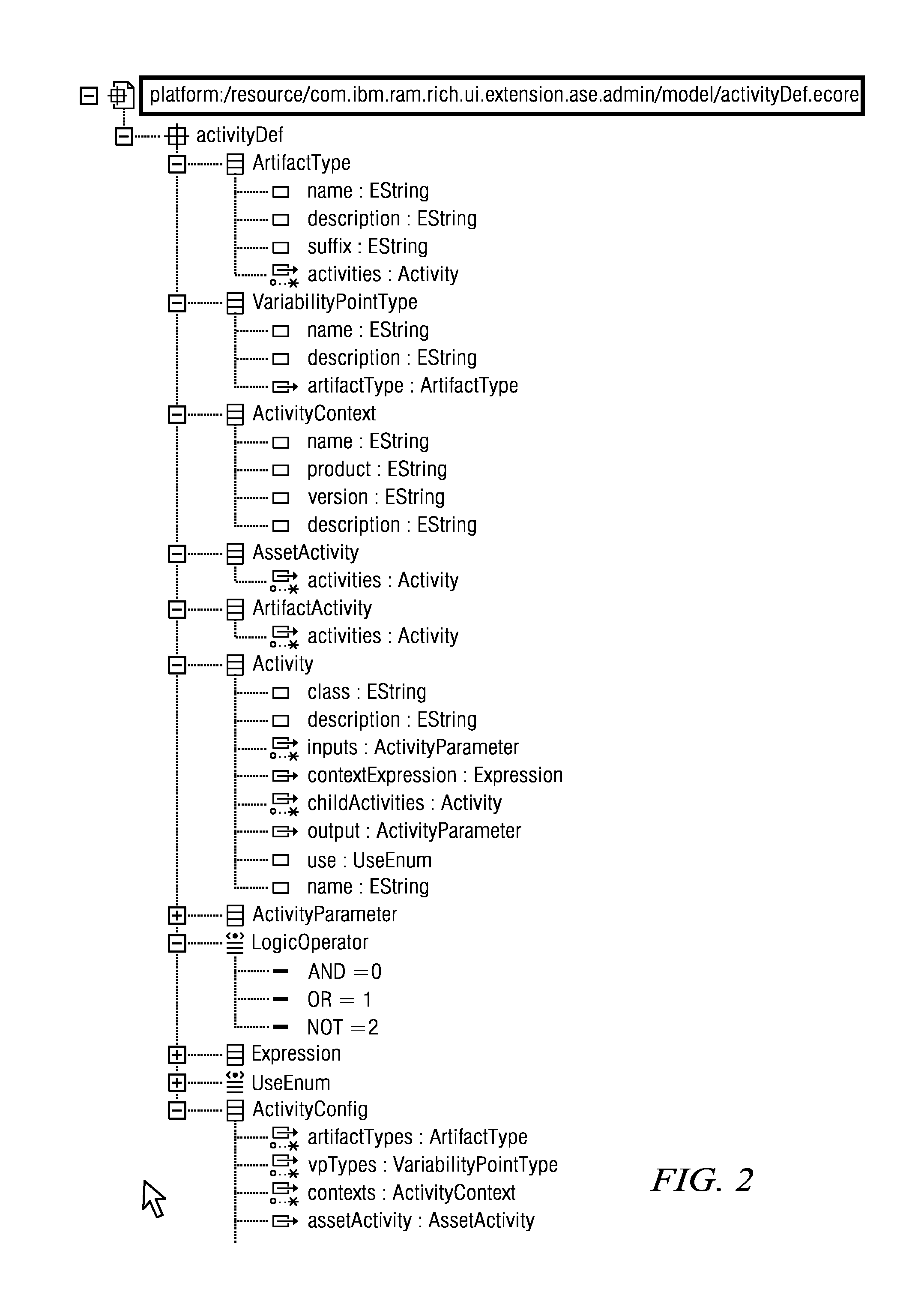Software Asset Packaging and Consumption Method and System
a software asset and consumption method technology, applied in the field of reusable assets, can solve the problems of complex modifications, inability to completely apply the same reusable asset to different contexts, and inability to achieve automatic consumption operations
- Summary
- Abstract
- Description
- Claims
- Application Information
AI Technical Summary
Benefits of technology
Problems solved by technology
Method used
Image
Examples
Embodiment Construction
[0027]The meanings of several terms used in the application are as follows:
[0028]Software asset: asset for short, usually refers to any usable software resources, such as source code, WSDL code, solutions, applications, etc; more specifically, refers to a collection of artifacts providing a solution to a problem in a given context;
[0029]Artifact: refers to a software working product that can be created, stored and manipulated by an asset producer / consumer or a tool. An artifact can be an actual file in an asset package, or represent a logical entity including at least one sub-artifact as an actual file. An artifact can be a requirement document, model, source code file, deployment descriptor, test case, or script, etc.
[0030]Artifact type: classification of artifacts. For example, artifacts representing actual files can be classified according to the file types (binary, pure textual, etc.). Artifacts can be classified in different granularities according to different criteria. For ex...
PUM
 Login to View More
Login to View More Abstract
Description
Claims
Application Information
 Login to View More
Login to View More - R&D
- Intellectual Property
- Life Sciences
- Materials
- Tech Scout
- Unparalleled Data Quality
- Higher Quality Content
- 60% Fewer Hallucinations
Browse by: Latest US Patents, China's latest patents, Technical Efficacy Thesaurus, Application Domain, Technology Topic, Popular Technical Reports.
© 2025 PatSnap. All rights reserved.Legal|Privacy policy|Modern Slavery Act Transparency Statement|Sitemap|About US| Contact US: help@patsnap.com



